Ball Cactus in the Minnesota Grasslands? Ya, You Betcha!
Escobaria vivipara (MN S1; state Endangered) is a ball cactus that has a large range across North America, extending into granite outcrops in the Great Plains grasslands. With less than 4% of native prairie remaining, North American prairies are one of the most endangered ecosystems in the world. The ball cactus is generally secure across great portions of its range, but in Minnesota, on the easternmost edge of the range, just a single population remains. This lovely little cactus was once abundant on exposed granite outcrops and shields extending along the Minnesota valley into the center of the state. However, agriculture took over as European settlers moved across Minnesota, and now less than 2% of the state’s native prairie remains. As tilling, human activity, and domesticated animal usage moved or covered all but the largest rock outcrops, ball cactus became rare – like many prairie plants that were already uncommon.
At one time the ball cactus was probably also found on drier, thinly vegetated prairie habitat, but it was eventually reduced to only undisturbed granite surfaces. Granite and quartzite outcrops in Minnesota are home to ephemeral pool habitats – shallow depressions where water can pool for a few weeks each year. These accumulate biotic matter and host several plants rare to the state, including Bacopa rotundifolia and Heteranthera limosa (both state Threatened). With only one ball cactus population left in Minnesota, it is hard to generalize about its preferred local habitat, but it appears to favor moss shields that occupy some of the same kinds of shallow depressions that form ephemeral pools. The plants also hug cracks in the granite and may even anchor an accumulation of duff and moss material around them as prairie winds blow over the rocks.
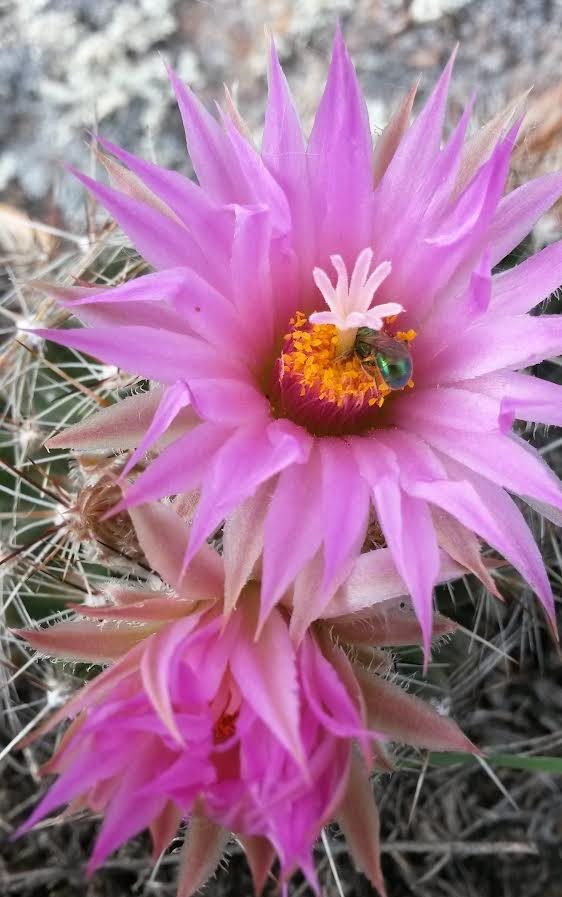
Minnesota’s ball cactus population sprawls across several properties, including land belonging to a private citizen, a municipal unused property, two granite quarries, and a National Wildlife Refuge (NWR). Unfortunately, the quarries, which contain the two largest subpopulations, are both seeking permits from the Minnesota Department of Natural Resources (DNR) to resume active mining in the outcrops where the cacti live. As this would destroy both the plants and a large portion of the genetic material available to the state’s ball cactus population, the DNR has not yet permitted the land use. To deal with this threat, Minnesota Landscape Arboretum obtained a grant from Minnesota’s Environmental and Natural Resources Trust Fund to move plants from the quarries to several protected locations, including granite outcrops at the NWR that are unoccupied by cacti and outcrops on land owned by The Nature Conservancy and another federally managed Waterfowl Production Area.
One potential setback is that rescues are not permitted in Minnesota until the original landowner Take Permit is granted, and the permitting process for the quarries is taking too long for us to hit our grant application window to request funding. What we did instead was to collect thousands of seeds from one of the quarry sites and the NWR. A majority of those seeds have now been banked in our long-term seed bank. In partnership with the University of Minnesota Twin Cities College of Biological Science’s Conservatory, we are also growing seedlings from the quarry subpopulation and have started planting them out in the sites noted above. Refining techniques between our two groups has enabled us to improve our germination rates to over 70%. As a result, we will eventually be planting roughly 2000 cacti seedlings across the three recipient sites over a several year period.
Our first planting day happened in early November 2022. The daily average temperature was still just above freezing, but (fortunately!) it was a sunny day with the rock surface temperature a balmy 50° F. We chose this timing because the cacti would likely be dormant and not in need of follow-up watering, as long as the areas received a good snow covering (knock on wood – the snow cover out there has been good so far). We placed about 110 plants at each site, planting some in granite crack microsites and some in moss shield microsites.
Our hope is that this first year will provide some feedback on planting techniques, microsite preference and mapping techniques. We also hope to obtain information on general survivability and establishment – especially regarding the chosen planting time – and on any potential animal issues. Critters are often attracted to the disturbance of planting and will dig around looking for goodies!
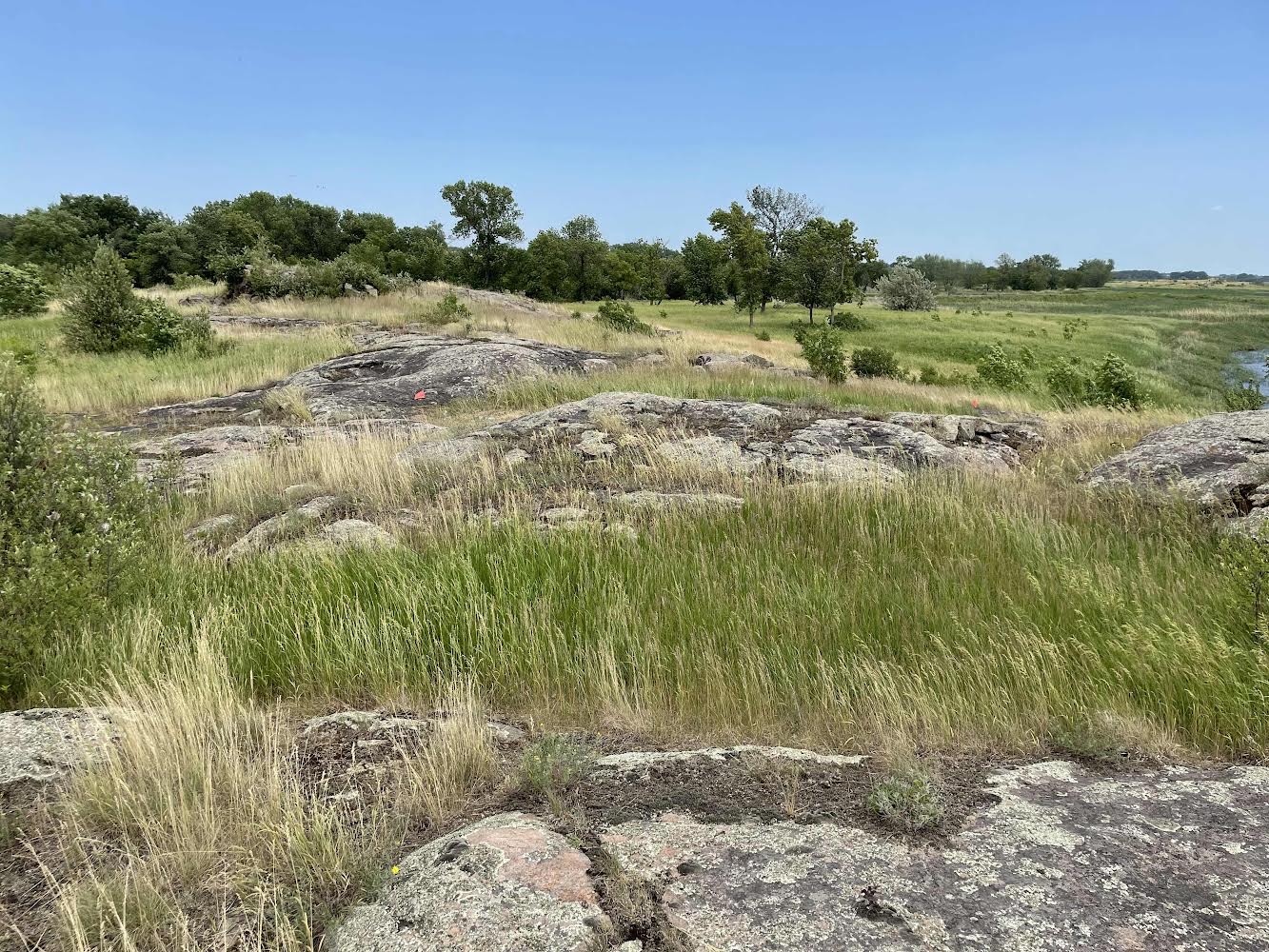
Our project has the practical goal of preserving the edge-of-range genetic library that could be key to survival of the ball cactus in a climate-changing world. An equally important goal is to bring this unexpected (and cute!) species to the attention of Minnesota residents. In a state renowned for its wetlands and lakes, even residents are surprised to learn that Minnesota has native cacti, including two common species of prickly pear (Opuntia). We hope to foster both a pride in the local flora and a desire to support efforts to keep our native plants around for the long term.
-
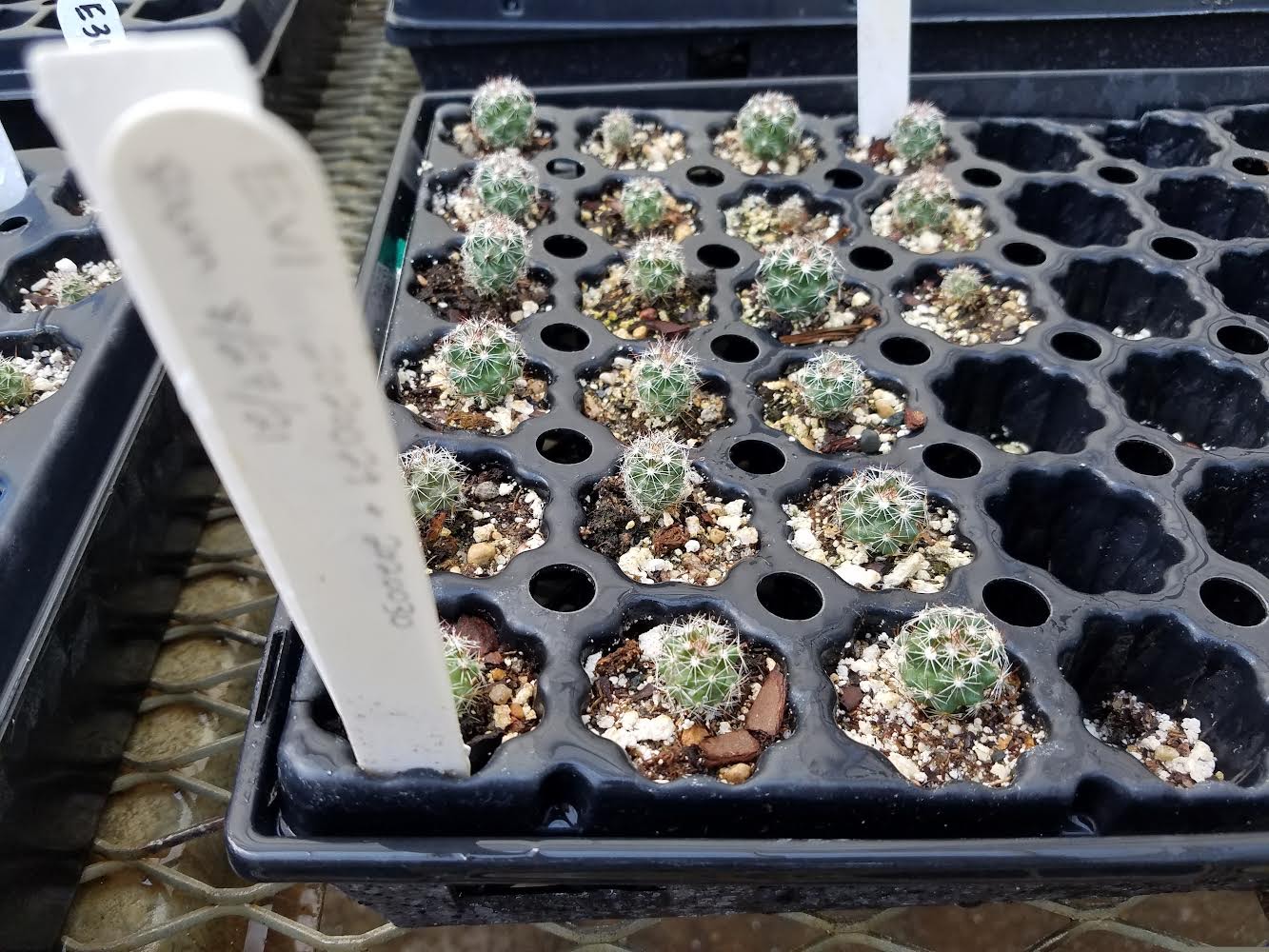
Escobaria vivipara seedlings at roughly 5 months at University of Minnesota Landscape Arboretum. Photo by Kim Drewiske. -
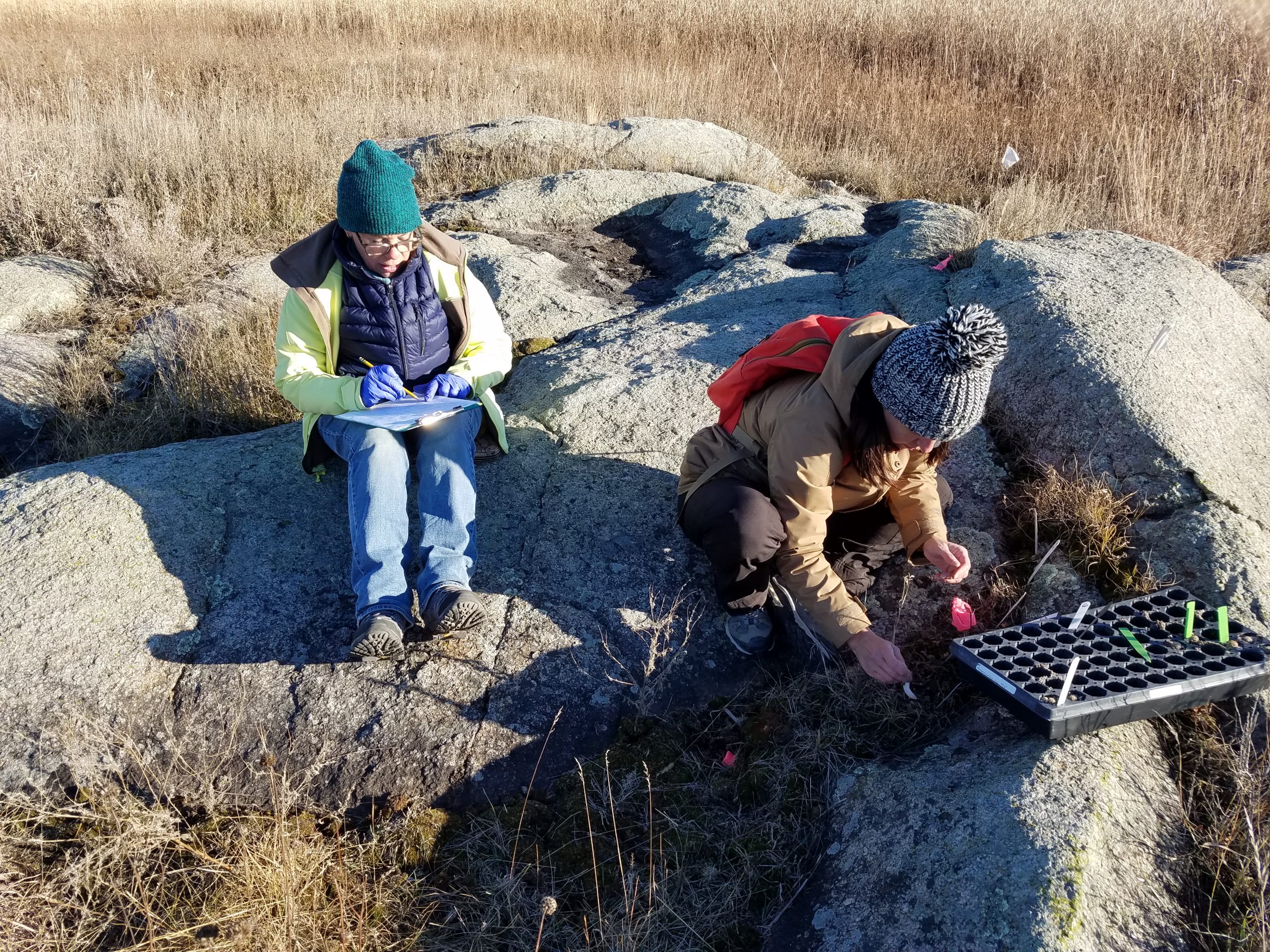
Escobaria vivipara outplanting. Photo by Kim Drewiske. -
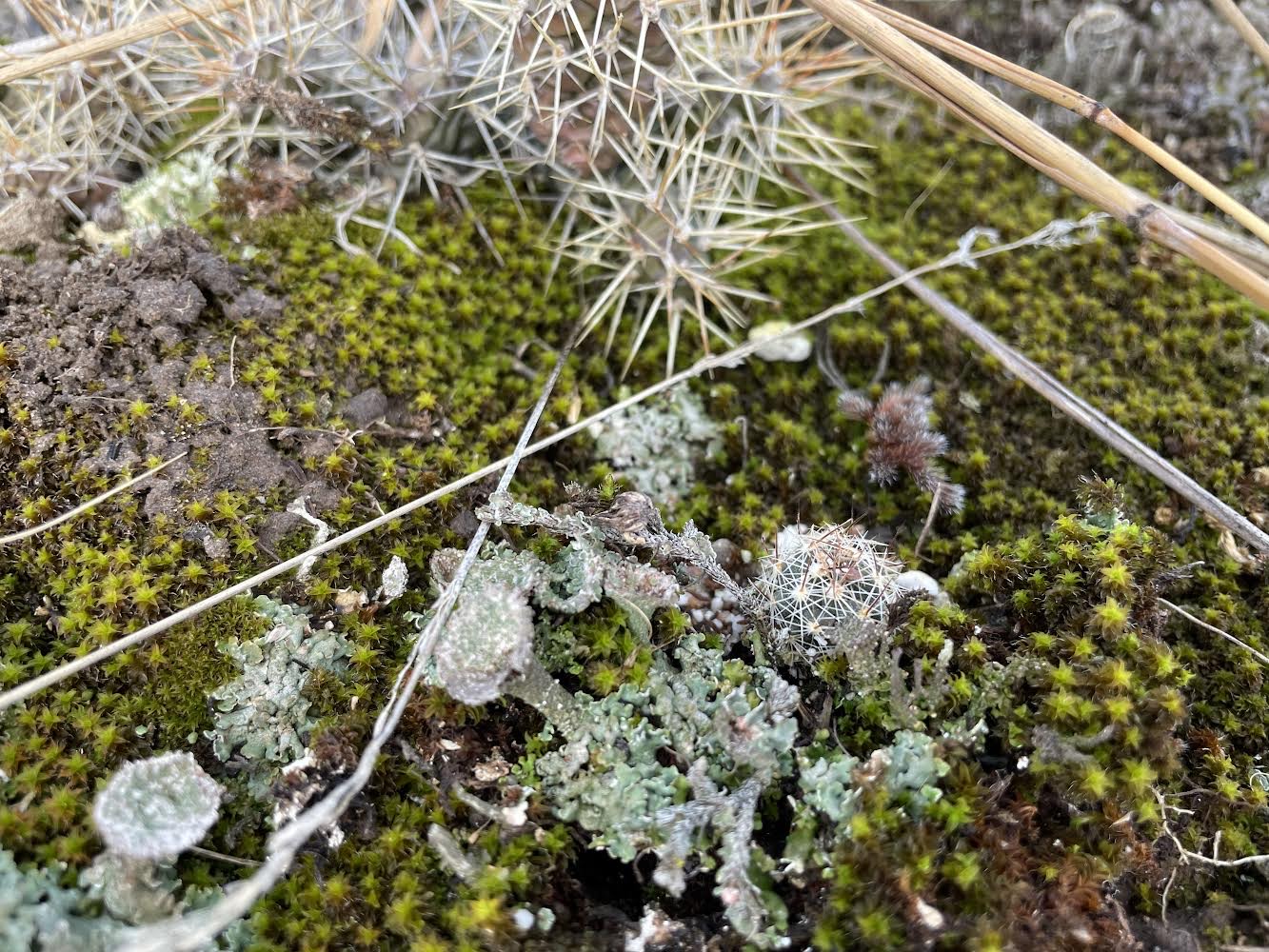
Planted Escobaria vivipara with Opuntia fragilis in the background at Big Stone National Wildlife Refuge. Photo by David Remucal.